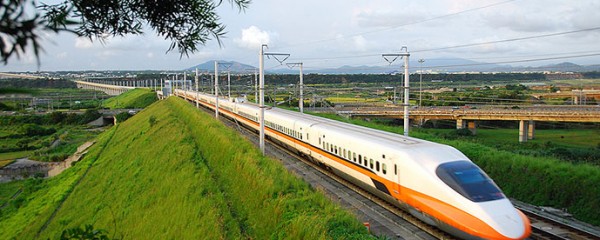10
Jul 2013
New High-speed Railway in China
New High-speed railway line linking Nanjing, Jiangsu Province with Ningbo, Zhejiang’s only deepwater port, and passing through Hangzhou, Zhejiang’s provincial capital put into operation this July. It means a faster connection was provided in Yangtze River Delta region, one of the richest regions in China.
This new high-speed railway will better integrate the region with Shanghai as a center to boost its neighbour cities. The exchange of regional and even international economic and trade will be increasing along with the travel time between cities is greatly shortened.
The Yangtze River Delta region, with a total area of 99,600 square kilometers spanning two provinces plus Shanghai, has a combined population of 75 million people.
According to statistics provided by the Shanghai Railway Administration for the first four months of this year, the Shanghai-Ningbo high-speed railway averaged 210,000 passengers a day, the Shanghai-Hangzhou high-speed train had 100,000 daily passengers, the Zhejiang coastal high-speed train averaged more than 70,000 passengers daily and the Hefei-Bengbu route was used daily by 13,000 passengers.
Shanghai’s role as a transportation center is evident in the scale of its road and rail network, which reached 7,800 km by the end of last year, 1,800 km of which are high-speed rail lines. It is expected the total length of the high-speed rail lines will reach 3,200 km by the end of 2015, all of which are up to international standards.
A close connection between the cities can be seen more intensely in the Hongqiao transportation hub. Located in the western part of the city, the hub connects the airport, high-speed railway and the city’s major metro lines, allowing people to transfer between cities with little effort.
Real estate developers have seen profits to be made near the Hongqiao hub with its large flow of passengers every day.
“A similar revolution is now taking place in China with the help of the high-speed train. Once realized, 25 million people will be able to live in an economic circle where they can reach each other’s cities within an hour. This cannot be compared to any other place in the world,” said Bryan Chan, project director of The Hub, at the Urban Land Institute’s forum on high-speed railway and urban development held in Shanghai in early June.
With the high-speed railway, urban planning can look farther to neighboring Nanjing, Hangzhou and Hefei, said Zhou Hongyun, chief engineer and executive deputy director of the Shanghai Railway Administration.
“In this sense, Shanghai’s development strategy can be expanded to a wider neighboring 35 sq km. A new economic development industry cluster will come into being in this way,” Zhou said.
Thanks to the prosperous logistics and convenient transportation, SBE set up a branch office in Ningbo since 2009. We are committed to taking advantages of the high-speed railway network to increase logistics, sourcing and procurement towards global market.
Source from: http://www.chinadaily.com.cn/china/2013-07/01/content_16699519.htm
– See more from: http://www.sbeintl.com/































